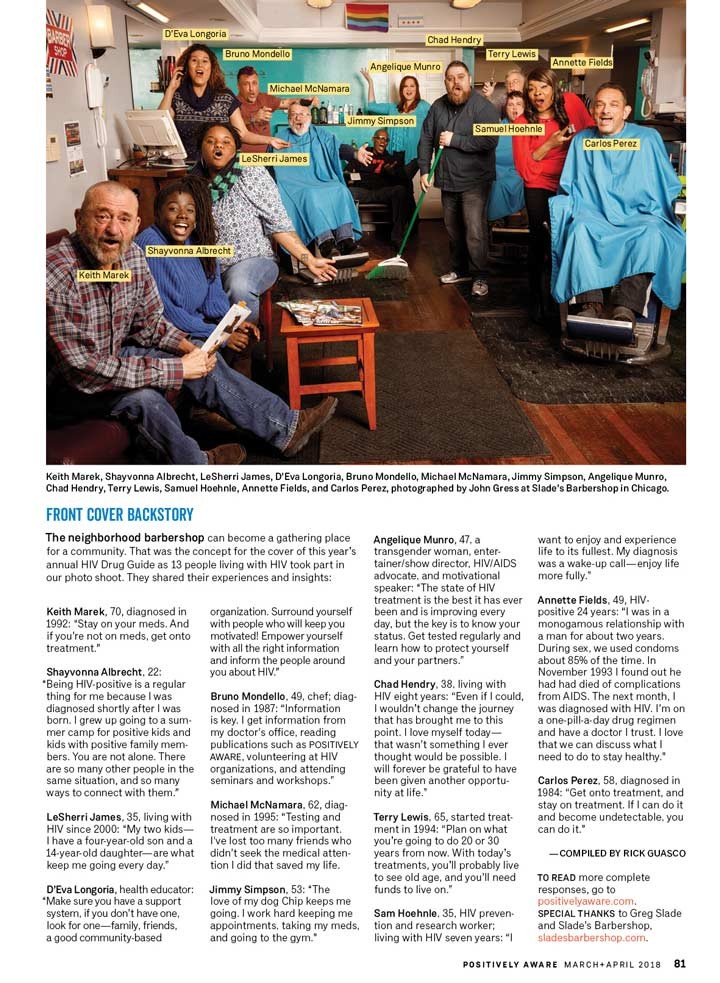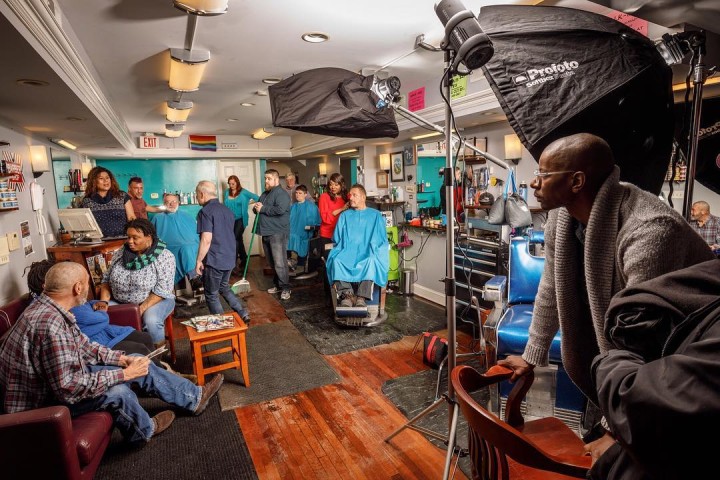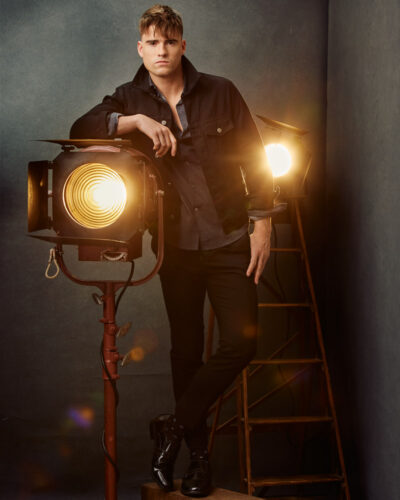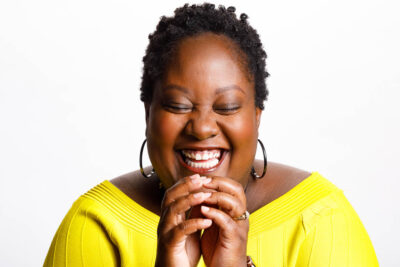On a snowy winter day, we crammed 18 people into a Chicago barbershop built for a dozen, so we could shoot the foldout magazine cover of Positively Aware’s annual HIV Drug Guide. It is always a challenge when you have to work with 13 subjects and have them all engaged, while maintaining the identity of the space and leaving room for the magazine logo, text, and the fold.
The Chicago-published magazine identified everyone with this fun photo below.
After we shot the cover, I quickly moved the lights around to shoot this image for the table of contents spread. 
Chicago Magazine Photographer Behind-The-Scenes
This was a tight fit so I had to use a few tricks to make the light directional, while making it even enough to fix in post. I used a Profoto 5’ Octabox with a grid as my main light and then from the same general direction I used a Chimera strip box boomed kind of above the first chair to light the back of the room, then filled the whole scene with a D1 bounced off the ceiling—all of which I had to keep out of the final shot!
Front Cover Backstory from Positively Aware Magazine
The neighborhood barbershop can become a gathering place for a community. That was the concept for the cover of this year’s annual HIV Drug Guide as 13 people living with HIV took part in our photo shoot. They shared their experiences and insights:
Keith Marek, 70, diagnosed in 1992: “Stay on your meds. And if you’re not on meds, get onto treatment.”
Shayvonna Albrecht, 22: “Being HIV-positive is a regular thing for me because I was diagnosed shortly after I was born. I grew up going to a summer camp for positive kids and kids with positive family members. You are not alone. There are so many other people in the same situation, and so many ways to connect with them.”
LeSherri James, 35, living with HIV since 2000: “My two kids—I have a four-year-old son and a 14-year-old daughter—are what keep me going every day.”
D’Eva Longoria, health educator: “Make sure you have a support system, if you don’t have one, look for one—family, friends, a good community-based organization. Surround yourself with people who will keep you motivated! Empower yourself with all the right information and inform the people around you about HIV.”
Bruno Mondello, 49, diagnosed in 1987: “Information is key. I get information from my doctor’s office, reading publications such as Positively Aware, volunteering at HIV organizations, and attending seminars and workshops.”
Michael McNamara, 62, diagnosed in 1995: “Testing and treatment are so important. I’ve lost too many friends who didn’t seek the medical attention I did that saved my life.
Jimmy Simpson, 53: “The love of my dog Chip keeps me going. I work hard keeping me appointments, taking my meds, and going to the gym.”
Angelique Munro, 47, a transgender woman, entertainer/show director, HIV/AIDS advocate, and motivational speaker: “The state of HIV treatment is the best it has ever been and is improving every day, but the key is to know your status. Get tested regularly and learn how to protect yourself and your partners.”
Chad Hendry, 38, living with HIV eight years: “Even if I could, I wouldn’t change the journey that has brought me to this point. I love myself today—that wasn’t something I ever thought would be possible. I will forever be grateful to have been given another opportunity at life.”
Terry Lewis, 65, started treatment in 1994: “Plan on what you’re going to do 20 or 30 years from now. With today’s treatments, you’ll probably live to see old age, and you’ll need funds to live on.”
Sam Hoehnle, 35, HIV prevention and research worker; living with HIV seven years: “I want to enjoy and experience life to its fullest. My diagnosis was a wake-up call—enjoy life more fully.”
Annette Fields, 49, HIV-positive 24 years: “I was in a monogamous relationship with a man for about two years. During sex, we used condoms about 85% of the time. In November 1993 I found out he had died of complications from AIDS. The next month, I was diagnosed with HIV. I’m on a one-pill-a-day drug regimen and have a doctor I trust. I love that we can discuss what I need to do to stay healthy.”
Carlos Perez, 58, diagnosed in 1984: “Get onto treatment, and stay on treatment. If I can do it and become undetectable, you can do it.”
—Compiled by Rick Guasco
Special thanks to Greg Slade and Slade’s Barbershop, sladesbarbershop.com.







